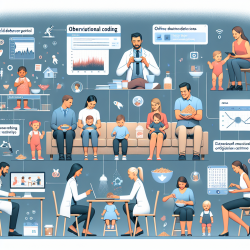Understanding Eating Pathology: Insights for Practitioners
The development of eating disorders is a complex process influenced by a myriad of factors. Recent research published in the International Journal of Eating Disorders sheds light on the risk factors in preadolescent boys and girls that could lead to eating pathology in young adulthood. This blog aims to help practitioners improve their skills by understanding these risk factors and implementing early interventions.
Key Findings from the Research
The study, part of the TRacking Adolescents' Individual Lives Survey (TRAILS), followed a cohort of 2,229 Dutch children from preadolescence into adulthood. It identified two primary risk factors associated with the development of eating pathology:
- Anxious Distress: Preadolescents exhibiting anxious distress were found to be at a higher risk of developing eating disorders in adolescence and young adulthood.
- High Weight: Children with higher body weight during preadolescence also showed a greater likelihood of experiencing eating pathology later in life.
Interestingly, the study found no evidence of sex-specific risk factors, indicating that these risks are prevalent across both genders. Furthermore, overeating during preadolescence was identified as a prodromal symptom of eating disorders during late adolescence.
Implications for Practitioners
For practitioners, these findings underscore the importance of early identification and intervention. Here are some actionable steps:
- Screening for Anxiety and Weight Issues: Regular screening for anxiety and weight issues in children can help identify those at risk. Tools like the ASEBA school-age forms can be useful in this regard.
- Early Intervention Programs: Implementing programs focused on anxiety management and healthy weight maintenance can mitigate the risk of developing eating disorders.
- Parental Involvement: Engaging parents in the intervention process can enhance outcomes, as family dynamics play a crucial role in child development.
Encouraging Further Research
While this study provides valuable insights, it also highlights the need for further research, especially longitudinal studies that can explore additional risk factors and intervention strategies. Practitioners are encouraged to stay informed about the latest research and integrate evidence-based practices into their therapeutic approaches.
To read the original research paper, please follow this link: Risk factors in preadolescent boys and girls for the development of eating pathology in young adulthood.










